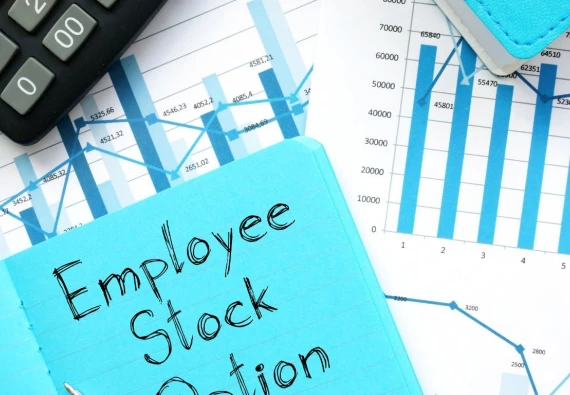*The “One Big Beautiful Bill Act” (OBBBA), signed into law on July 4, 2025, introduced significant updates to the Qualified Small Business Stock tax exemption. Changes include a higher exclusion cap, expanded company eligibility, and partial gain exclusions for earlier exits. If you’re reading this post for QSBS guidance, please be aware that the rules have changed. You can read more about the changes here.
Qualified small business stock (“QSBS”) offers big tax saving opportunities for startup founders. We’ve outlined the basics of QSBS in our primer, QSBS: The Basics of Tax-Advantaged Startup Stock. Think of that as QSBS 101.
This post is QSBS 201. Here, we look at different strategies to move beyond the basic QSBS benefits, in particular the $10 million gain exclusion cap. By making strategic choices about when to incorporate, when to sell QSBS, how to structure ownership of QSBS, and what gains to roll over into replacement QSBS, founders can boost QSBS benefits well beyond the $10 million gain exclusion. This guide walks through the strategies that can make outsize tax savings a reality.
Understanding QSBS Exclusion Limits
Before diving into strategies for increasing QSBS benefits, it’s important to get a handle on the QSBS gain exclusion limits and how they work. Section 1202 imposes limits on the dollar amounts that can be excluded from federal capital gains tax.
Here’s the simple formulation of the exclusion limits: When a taxpayer sells QSBS, they can exclude the greater of (a) up to $10 million (“$10 million cap”), or (b) 10x their adjusted basis in the shares sold during a taxable year (“10x basis cap”).
There’s some nuance to add to this. If a taxpayer had already excluded some gain from selling QSBS in the same company in previous years, then that amount reduces the available $10 million cap for future years. In other words, the $10 million cap is fixed, and so any gain excluded under that cap will reduce the overall amount available under the same cap.
That’s not the case for the 10x basis cap. Gain previously excluded doesn’t impact the availability of the 10x basis cap in later years, which is in effect “refreshed” each year and is calculated based only on the basis of the QSBS sold that year.
Let’s look at two examples which illustrate this difference between the $10 million cap and the 10x basis cap.
Example 1: Nina owns 1 million shares of common stock with zero basis. In 2025, she sells half of her shares for $5 million and excludes all $5 million in proceeds using the $10 million cap. As a result, the amount she can exclude under the $10 million cap in future sales is reduced to $5 million. So, when in 2026, she sells her remaining shares for $10 million, she can only exclude the remaining $5 million in gain available under the $10 million cap.
Example 2: Now let’s tweak the facts. In addition to her shares of common stock, Nina owns 1 million shares of Series A Preferred Stock with a basis of $1 million. In 2027, following the sale of her shares of common stock in 2025 and 2026, Nina sells all of her shares of Series A Preferred Stock for $10 million. Nina can no longer exclude gains under the $10 million cap. But because the 10x basis cap refreshes each year, she can exclude all of her gains in 2027 because they fall under the 10x basis cap (i.e., 10x her $1 million basis).
For the typical founder, who usually owns common stock with a low basis, the $10 million cap will function as their effective ceiling. However, with strategic planning a founder may be able to take advantage of both the $10 million cap and the 10x basis cap to expand their gain exclusion. This strategy, and others for boosting QSBS benefits, is where we now turn our attention.
Strategies to Boost the QSBS Exclusion
As we get into the weeds of strategies to maximize QSBS benefits, it should be acknowledged that even the plain vanilla outcome is a good one. That is, if a founder exits and is able to exclude $10 million in proceeds from federal capital gains tax using the $10 million cap, the founder will have saved millions of dollars in taxes. That’s the baseline and the baseline is good.
But there are strategies that can help boost tax savings beyond this baseline, including converting from an LLC to a corporation at the right time, spreading sales across tax years, stacking ownership among multiple taxpayers, and rolling over QSBS proceeds into replacement QSBS. Let’s take a closer look at these strategies.
Incorporating at the Right Time
Incorporating as a C corporation at the right time can unlock the 10x basis cap. That’s because the 10x basis cap calculates gain exclusion based on a taxpayer’s adjusted basis in the QSBS at the time the QSBS is issued. If a startup incorporates right away, a founder’s basis will be close to zero, which rules out use of the 10x basis cap. But if a startup forms as an LLC and waits to incorporate until later, after there is real value in the company, the founders can contribute appreciated assets to the new C corporation in exchange for QSBS. The fair market value of those assets becomes the founders’ basis in the QSBS.
Tip: It’s important to note that this only works if the startup incorporates when the assets of the LLC are valued at not more than $50 million. Hence, the maximum gain exclusion under the 10x basis cap is $500 million.
Example: A founder starts their business as an LLC and bootstraps for two years. The company develops IP, lands its first few customers, and grows in value to $3 million. At that point, the founder converts the business to a C corporation and contributes the appreciated assets in exchange for newly issued QSBS. Five years later, the company is sold for $25 million. Because the founder’s basis in the QSBS is now $3 million, they can exclude up to $30 million of gain under the 10x basis cap. The founder will pay federal capital gains taxes on the first $3 million of proceeds but can then exclude the remaining $22 million in proceeds from federal capital gains tax.
Incorporating at a strategic time can supercharge QSBS benefits to founders. Realistically, though, this strategy can be challenging for most startups to implement effectively (see our guide to converting to a C corporation for more background on this), and so it’s important to work with an experienced startup lawyer to understand whether this strategy may be worth pursuing.
Spreading Sales Across Tax Years
The next strategy builds on the first. Founders that have established a meaningful basis in their QSBS by incorporating at the right time can stretch the QSBS benefit even further by spreading sales across tax years.
Section 1202 allows the 10x basis cap to reset annually, creating opportunities to apply the exclusion multiple times if sales are spread across tax years. While many exits involve the full sale of a company in a single calendar year, founders and early shareholders may have the opportunity to stage their stock sales over time via secondary sales and an eventual exit. This strategy gives founders a chance to apply the 10x cap again and again, potentially shielding tens of millions more from federal capital gains tax.
Example: Founder Emma converted her LLC into a C corporation in 2025 when the value of the company was $4 million. By 2030, her company has grown significantly, and she decides to sell half of her shares in a secondary sale. The 2030 sale generates $22 million of gain. Because her basis in these shares is $2 million, she qualifies to exclude up to $20 million of gain that year under the 10x basis cap.
In 2031, Emma sells the other half of her QSBS. Because it’s a new tax year, she can apply the 10x cap again, excluding another $20 million of gain (as her basis in these shares is $2 million). Through careful planning, Emma has excluded a total of $40 million across two tax years, double what she could have achieved if she had sold all of her shares in the same tax year.
This strategy also works well when a taxpayer holds multiple blocks of QSBS with different basis levels. For example, low-basis common stock from early issuance and high-basis preferred stock acquired later through a priced round, option exercise, or IP contribution.
Example: Now let’s suppose that Emma holds both low-basis common stock and higher-basis preferred stock acquired later via a priced round. In 2030, she sells $10 million of common stock with negligible basis. She uses the $10 million cap to exclude the entire gain.
Two years later, in 2032, she sells $18 million of Series B preferred stock, which has a $2 million basis. Because it’s a different tax year, she can now apply the 10x basis cap and exclude the entire $16 million of gain from the sale. In total, Emma excludes $26 million of gain across two years by timing her sales and leveraging different QSBS basis levels.
Stacking Exclusions Through Gifting and Trust Planning
Founders can also expand their total exclusion by strategically shifting ownership of QSBS to others. Because Section 1202 applies on a per-taxpayer basis, transferring shares to family members or irrevocable trusts opens the door to leveraging multiple exclusion caps across different taxpayers, a practice colloquially known as “stacking.”
Stacking provides founders an opportunity to boost the QSBS exclusion by dividing ownership among multiple qualified holders. Because Section 1202’s exclusion is calculated on a per-taxpayer basis, each qualifying recipient, whether a family member or an irrevocable trust, gets their own $10 million (or 10x basis) cap.
This strategy works particularly well when integrated into broader estate and income tax planning. By transferring QSBS to family members or irrevocable non-grantor trusts early, while the company’s valuation is still low, founders can minimize gift tax exposure and preserve maximum upside for later exclusion.
Tip: Under Section 1202, the recipient of a gift steps into the donor’s shoes for both tax basis and holding period. That means a properly timed gift preserves eligibility and allows the new holder to claim their own $10 million (or 10x basis) cap at sale.
Example: Founder Alex owns QSBS with a negligible basis. Shortly after formation, she considers several options to reduce tax exposure while planning for long-term wealth transfer. What follows are two possible planning paths Alex might pursue, depending on how early she acts and how much control she wishes to retain: direct gifts to family or transfers to non-grantor trusts.
Option 1: Alex may choose to gift QSBS to her mother and to her adult child shortly after formation, in which case each family member is treated as a separate taxpayer and can each exclude up to $10 million. Assuming the holding period is satisfied, the family can exclude $30 million in total gain under the $10 million cap, instead of just $10 million for Alex had she not gifted shares.
Option 2: Alternatively, Alex may choose to transfer ownership through trusts rather than outright gifts. If she establishes three non-grantor irrevocable trusts (one for each child) and transfers QSBS to each, the trusts are each treated as separate taxpayers. As long as they meet the holding and original issuance requirements, each trust can independently exclude up to $10 million of gain under the $10 million cap.
These are but a few of many examples of how this strategy can be deployed. The key underlying structural factor that enables this strategy is that the QSBS gain exclusion is tied to the taxpayer–-so, in general, the more taxpayers there are the more gain exclusions there are.
Timing is critical. Gifting QSBS before significant appreciation increases the value excluded while minimizing gift tax consequences. Once the value climbs, more sophisticated structures may be needed to avoid triggering tax. Founders should also be mindful of annual gift limits, the lifetime exemption ($13.99 million if single, and $27.98 million if married and filing jointly, for the 2025 tax year), and reporting obligations.
Effective use of the stacking strategy requires planning well in advance of a liquidity event. But for founders who act early, it can turn a single $10 million exclusion into a multi-generational tax shield.
Using Rollovers to Defer Gains and Extend QSBS Benefits
QSBS is a powerful tool, but like all tools it has limits. For most founders, that limit at the time of their exit will likely be $10 million in excludable gain. That’s because most startups won’t have deployed advanced planning strategies, like incorporating at the right time, selling across multiple tax years prior to the time of sale, or stacking ownership. Even if this is the case, though, founders still have one more card they can play.
That card is a Section 1045 rollover. We’ve previously written about using 1045 rollovers as a workaround to the 5-year holding period for QSBS. But founders can also use Section 1045 to roll over excess gain above the exclusion limit into replacement QSBS from one or more issuers. Doing this will defer taxes on that gain and the holding period for the original QSBS will be tacked onto the holding period for the replacement QSBS. Rolling excess proceeds into multiple replacement QSBS investments can yield independent gain exclusions for each investment. In this way, 1045 rollovers can be used to stack additional exclusions after a large liquidity event.
This strategy could be deployed by forming a new startup and rolling gains into the startup or by investing gains in another startup that’s a QSBS-eligible issuer. These are just a few possibilities but there are many other creative applications. So long as the gains are rolled over within 60 days in exchange for replacement QSBS, the core requirements are in place, though, with that said, there are additional detailed requirements that must be met. Any use of this strategy needs to be done in close counsel with legal and tax advisors, as there are many traps for the unwary.
Final Thoughts
The baseline tax benefits of Section 1202 are substantial in their own right. But, with the right planning, founders can boost these benefits dramatically. Whether converting at the right time, spreading sales across tax years, stacking ownership, or rolling gains into new ventures under Section 1045, founders have the means to create not only a life changing exit but also a life changing tax strategy. These strategies require forethought and coordination, but they’re often well within reach for founders who plan early and engage the right advisors.






